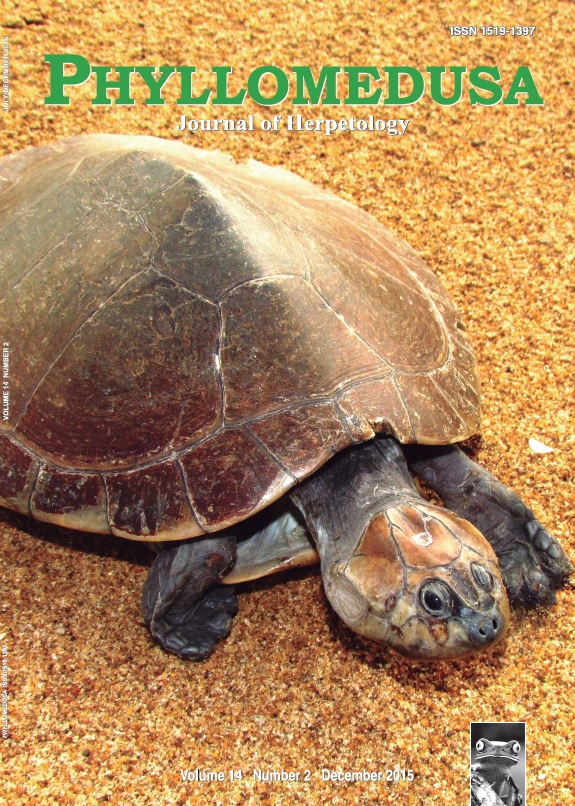On the natural history of the Caatinga Horned Frog, Ceratophrys joazeirensis (Anura: Ceratophryidae), a poorly known species of northeastern Brazil
DOI:
https://doi.org/10.11606/issn.2316-9079.v14i2p147-156Keywords:
Anura, Caatinga, diet, reproduction, sexual dimorphism.Abstract
On the natural history of the Caatinga Horned Frog, Ceratophrys joazeirensis (Anura: Ceratrophryidae), a poorly known species of northeastern Brazil. Data on reproduction, sexual dimorphism, and the diet of Ceratophrys joazeirensis, the only species of the genus that occurs in the Brazilian semiarid Caatinga Biome, are presented. Anurans were observed and collected in Santa Maria Municipality, state of Rio Grande do Norte in northeastern Brazil. Fieldwork was conducted at night either after or during rains throughout the rainy season in 2010–2013. Searches were conducted near places where males were calling, usually around the perimeters of bodies of water. Reproduction is explosive in the population, with breeding activity occurring as the rain intensified during the rainy seasons of 2011–2013. However, in 2010, neither calling males nor active females were found, even after rainy days. Although males call in temporary and permanent ponds, most males call in the marginal vegetation of temporary ponds. Females C. joazeirensis are significantly larger than males. The average clutch size is 2555.0 ± 1551.1 eggs; clutch size is not significantly correlated with female body size. In decreasing order of volume, the most important prey categories in the diet of C. joazeirensis are anurans, followed by coleopterans and plant material. The apparent importance of anurans in the diet probably is related to the number of anuran species that co-occur with C. joazeirensis and the voracious feeding behavior of ceratophryids.Downloads
Download data is not yet available.
Downloads
Published
2015-12-29
Issue
Section
Articles
License
All material originally published in Phyllomedusa belongs to Escola Superior de Agricultura Luiz de Queiroz - Universidade de São Paulo. All contents are under a license of Creative Commons BY-NC-ND.How to Cite
Jorge, J. da S., Sales, R. F. D., Kokubum, M. N. de C., & Freire, E. M. X. (2015). On the natural history of the Caatinga Horned Frog, Ceratophrys joazeirensis (Anura: Ceratophryidae), a poorly known species of northeastern Brazil. Phyllomedusa: Journal of Herpetology, 14(2), 147-156. https://doi.org/10.11606/issn.2316-9079.v14i2p147-156



 Impact Factor (JCR): 0.600
Impact Factor (JCR): 0.600 CiteScore: 1.0
CiteScore: 1.0